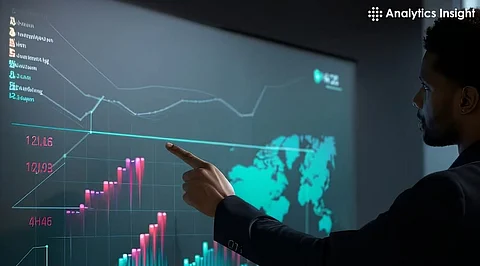

Python has emerged as a dominant language in the realm of data analysis, thanks to its versatility, ease of use, and a rich ecosystem of libraries. Among the plethora of tools available, some stand out as essential for any data analyst or scientist. In this article, we will delve into some of the best Python libraries for data analysis, exploring their features and use cases.
Matplotlib is a versatile 2D plotting library that provides an array of visualization options. Whether it's line plots, scatter plots, bar plots, or even 3D plots, Matplotlib has you covered. Its customization capabilities allow users to fine-tune every aspect of their visualizations, making it an indispensable tool for creating publication-quality graphs.
Scikit-learn is a robust machine learning library that simplifies the implementation of various algorithms for tasks such as classification, regression, clustering, and more. With a clean and consistent API, Scikit-learn is perfect for both beginners and experienced practitioners. Its extensive documentation and community support make it an invaluable asset for any data scientist.
Seaborn is built on top of Matplotlib and focuses on providing a high-level interface for statistical graphics. It streamlines the generation of visually appealing and insightful statistical visualizations. Seaborn is especially useful for visualizing complex datasets with multiple variables, making it an excellent choice for exploratory data analysis.
SciPy, an extension of NumPy, enhances scientific computing by offering supplementary features. Its modules cover optimization, signal processing, linear algebra, integration, interpolation, and beyond. The synergy between NumPy and SciPy creates a powerful environment for numerical analysis and scientific computing in Python.
Originating from Google, TensorFlow is an open-source library specializing in constructing and training advanced deep learning models. Its flexibility allows users to deploy models on various platforms, from edge devices to cloud servers. TensorFlow is widely adopted in both research and industry, making it a cornerstone in the field of deep learning.
Keras is an open-source neural network library written in Python that serves as a high-level API for building and training deep learning models. It acts as an interface for TensorFlow, Theano, and Microsoft Cognitive Toolkit, providing a user-friendly approach to developing deep learning applications. Keras is acclaimed for its straightforwardness and user-friendly interface.
PyTorch is a dynamic, open-source deep learning library that has gained immense popularity for its flexibility and intuitive design. Developed by Facebook, PyTorch allows for dynamic computation graphs, making it easier to debug and experiment with models. Its seamless integration with NumPy and dynamic computational graph make it a favorite among researchers and practitioners alike.
Plotly is a powerful and interactive plotting library that supports various chart types, including line charts, scatter plots, and 3D plots. With its ability to create visually appealing and interactive visualizations, Plotly is often used for building dashboards and web applications. With support for various programming languages, it stands as a flexible option for data analysts and developers alike.
Statsmodels is a library specifically designed for estimating and testing statistical models. It includes a wide range of statistical models for regression analysis, time-series analysis, and hypothesis testing. Statsmodels is an essential tool for data analysts and statisticians who need to conduct rigorous statistical analyses in Python.
The Python ecosystem offers a treasure trove of libraries for data analysis, each catering to specific needs and preferences. Whether you are visualizing data, implementing machine learning algorithms, or conducting statistical analyses, the libraries mentioned above provide a solid foundation for any data professional. As the field of data analysis continues to evolve, staying familiar with these libraries ensures that you are equipped with the right tools for the job, empowering you to extract valuable insights from your data.
Join our WhatsApp Channel to get the latest news, exclusives and videos on WhatsApp
_____________
Disclaimer: Analytics Insight does not provide financial advice or guidance. Also note that the cryptocurrencies mentioned/listed on the website could potentially be scams, i.e. designed to induce you to invest financial resources that may be lost forever and not be recoverable once investments are made. You are responsible for conducting your own research (DYOR) before making any investments. Read more here.
